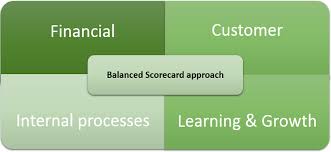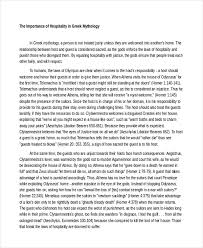
The balanced score card (BSC)
Order Instructions:
Dear Admin,
The balanced scorecard’s (BSC) four focus areas are financial, customer, process, and learning and growth. The scorecard incorporates measures derived from an organisation’s strategy. Although retaining financial measures of past performance, the balanced scorecard also introduces the drivers of future financial performance.
Address the following issues/questions:
Critically evaluate the advantages of using the BSC approach to performance measurement and identify critical areas in terms of implementation of the BSC. Should public sector or not-for-profit organisations develop a BSC? Use examples to illustrate your points as well as suitable academic references.
And consider the following questions:
•What are the advantages of using the balanced scorecard?
•What are the critical areas that should be considered in its implementation?
•Should the balanced scorecard be used across different organisations?
Also,
1) The answer must raise appropriate critical questions.
2) Do include all your references, as per the Harvard Referencing System,
3) Please don’t use Wikipedia web site.
4) I need examples from peer reviewed articles or researches.
5) Turnitin.com copy percentage must be 10% or less.
Appreciate each single moment you spend in writing my paper
Best regards
SAMPLE ANSWER
Introduction
Balance scorecard approach is a strategic system of management and planning that is widely used in the business environment with the sole aim being to have all the activities of an organization well aligned with the vision of the organization. Further, this approach helps to ensure that the communications of the organization both internal and external are improved. The third and equally important goal of balanced score card is to help assess the performance of the organization against the already laid don strategies and goals.
Advantages
The balanced score card has a couple of benefits to the business. As the name suggests, it is a business strategy whose aim is to bring about balance within an organization. The traditional strategies that have been in place have only concentrated on only certain aspects of an organization (Niven 2010). This has often led to imbalance and the resulting effect is that it is not possible to fully assess the performance of the organization. With the balanced score card, every aspect of the organization is carefully considered and assessed. The balanced score card has four main areas of focus. These are processes, customer, finances and growth. All these aspects spread out to cover all other areas of an organization.
Due to the fact that each area is assessed separately, departments have to become creative and generate new ideas that will ensure that they remain afloat. Unlike in the past where departments in an organization depended on each other for performance, each department is now assessed independently. This has encouraged need for every department to perform as expected.
Although there is separation of departments, there is a chain of activities that are interconnected and run across departments. As such, instead of having unhealthy competition among departments, teamwork is encouraged. The cyclic nature of interdependence in activities means that each department must be supportive of each other (Gerard, 2012). This has been identified as one of the strong pillars of the balanced score card approach.
With a balanced score card, it helps to give the management, at a glimpse, the nature of operations of the organization (Kaplan & Norton 2013). The approach helps to summarize and consolidate under a single platform of the activities and operations of an organization. As such, monitoring becomes easier and does the assessment. This makes it easy to assess whether or not the organization is meeting its goals as projected in the vision and the strategic plans of the organization.
Implementation
In implementing the balanced sore, there are areas that must be carefully considered. The first is the how well the strategy blends with the vision and mission of the company. Any strategy that does not support the projected goals of the organization will not contribute to such an achievement (Smith 2010). It is therefore crucial that care is taken to ensure that there is proper alignment of the two.
Further, in the implementation of the same, it is important to consider the contributions towards performance of the business (Niven 2010). The business core card that is set in place must have its primary objective as boosting and improving performance of the organization. A company’s performance determines its future. In performance, there are very many issues that are considered including customer satisfaction. It is not just the profit margins that are considered but also how well the customers of the business are served. Customers are the biggest asset of any organization. Their satisfaction largely determines the performance of the organization.
Use of Balanced Score Card
Although the balanced scorecard is often used in business organizations, it is often applicable in nonprofit making organizations. The balanced score card’s aim is not just to ensure that profit margins come up (Brown, 2007). Rather, the aim is to ensure that an organization can match its performance to its goals, long term and short term and its vision. Further, it helps make the management’s work easier by consolidating the activities of the organization. In so doing, the performance of the company goes up.
Certainly, the balanced score card has been as being very effective in profit making organizations. Every aspect of the business and especially the finances are out in check and this helps to push the profit margins considerably.
Conclusion
In an era where organizations are seeking to improve performance management, business scorecard is an idea that cannot go unnoticed. The pivotal role played by this strategy has helped increase the ability of organizations reach their intended goals. It has been realized that proper implementation of the balanced score card helps improve customer satisfaction. The overall value of services and products of the company also goes up. Besides bringing harmony in the activities of an organization, it also helps to streamline the in-house activities of the organization. Teamwork becomes more evident and this in turn boosts performance Channels of communication are also opened up. This means even in organizations where there is structural bureaucracy, those down in the ladder can still communicate to the top management. Balanced score card is business idea that has been tried and tested and has proven practicable.
References
Brown, M, 2007, Beyond the balanced score card: improving business intelligence with analytics, New York, Analytics Press.
Gerard, B, 2012, Balanced scorecard 100 success secrets, New York, Prentice Hall
Kaplan, & Norton D, 2013, Alignment: using the balanced scorecard to create corporate synergies, London, Sage.
Niven, R, 2010, Balanced score card: step by step, California, John Wiley and Sons
Smith, R, 2010, Business process management and the balanced score card, California, John Wiley and Sons
We can write this or a similar paper for you! Simply fill the order form!












